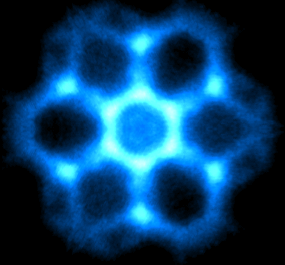The reasons for this situation are manifold : the element of novelty, new
and costly equipments and in particular the necessity of appropriate training
in the manual operation of the high-pressure cells, in pressure calibration,
in measuring and processing diffraction data ; these data have later to be
combined with relevant complementary methods, both experimental (e.g. spectroscopy)
and theoretical (e.g. first-principle calculations), and thermodynamic background.
Consequently, (low) temperature is still a more common thermodynamic parameter
employed by research scientists, even though pressures are much more efficient
for modifying crystal structures than temperature.
Meanwhile, due to the new designs of x-ray diffraction equipment (powerful micro-focus x-ray sources, parabolic-mirror collimators, area detectors etc.), new high-pressure cells, cheaper and more precise spectrometers (with CCD detectors or arrays of diods), as well as due to more efficient methods of measuring and processing the data, the high-pressure studies can be easily accessible to a much broader community than before. Moreover, several facilities.financed by goverments have dedicated neutron or synchrotron beamlines to high-pressure research. A significant amount of the beam time in these stations is allocated to general users and everyone can apply to carry out experiments there (ESRF in Grenoble, SRS in Daresbury, APF in Argonne (one station under construction by the Carnegie Institution of Washington, ISIS in Oxon, ILL in Grenoble, CHESS; several new synchrotrons are under construction).
These investments are justified by the technological and industrial applications of high pressures and the most spectacular ones are the super hard materials, the discovery of new organic and inorganic compounds (e.g. explosives and GaN – crystals for blue lasers), the superconducting properties of cuprates prepared at high pressure, the modelling and production of sophisticated metallic profiles, or - beyond the solid state - even preserved food.

